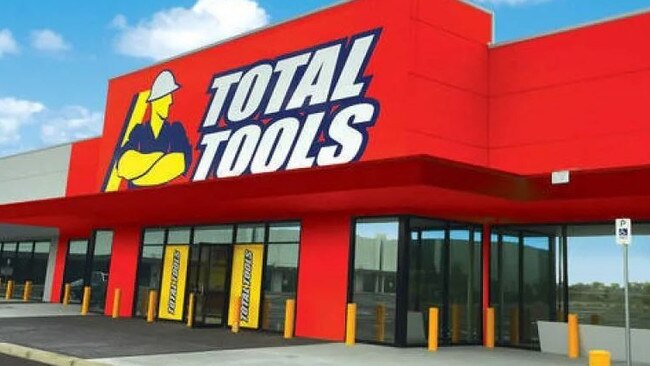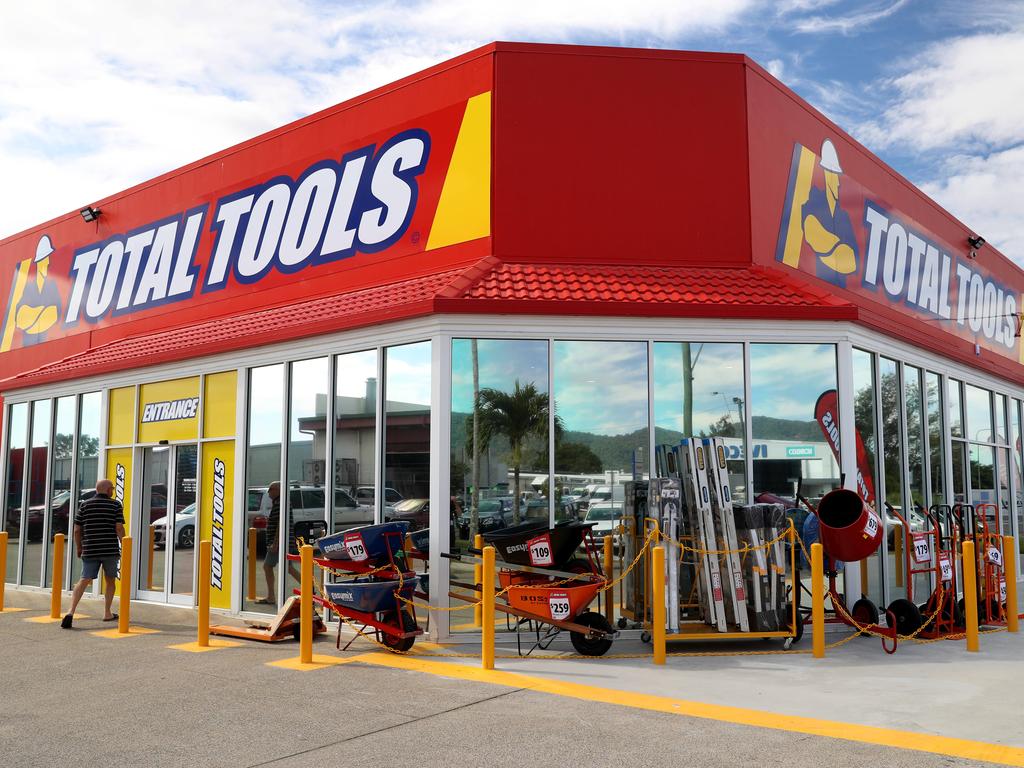Metcash swings back to profit in first half after pivot to ‘local’
Metcash shares jump on promising outlook, after trend to neighbourhood shopping aids ‘unprecedented’ sales growth.

Metcash is banking on the return to the local neighbourhood supermarket, bottle shop and hardware store that has flourished through COVID-19 to continue into 2021 and even after a vaccine is deployed, as new consumer behaviour favouring shopping close to home become entrenched.
Chief executive Jeff Adams said even in areas across the country where there were early easing of restrictions around travel, social distancing and store openings his banner chains from IGA supermarkets to Mitre 10 hardware and Thirsty Camel liquor stores had sustained elevated levels of sales.
“They have obviously been shopping with us for nine months now and in a lot of cases in states where the restrictions have eased quite a bit we are still seeing elevated levels of sales in those states,” Mr Adams told The Australian after Metcash swung back into profitability with a first half net profit of $125.1m, against a loss in 2019 of $151.6m.
“I think some of those changes to consumer behaviour of cooking more meals at home, there are still a lot of people even with restrictions lifted working from home, that means lunches and breakfasts and other meals at home.
“And it is likely to carry on,” Mr Adams said.
Shares in Metcash rallied on the return to profits and the strong outlook, jumping more than 10 per cent before closing up 33c at $3.55.
On Monday, Metcash revealed it had posted surging sales across all its retail pillars of grocery, liquor and hardware, for the first half to the end of October as the COVID-19 pandemic encouraged shoppers to stay close to home and visit local neighbourhood stores.
Hardware was a standout performer for Metcash as it benefited from the massive rise in people doing home improvement, renovation projects and work in the garden – a theme which has also helped boost sales for market leader Bunnings – and Metcash’s hardware division recorded a 65.8 per cent lift in earnings.
Liquor also starred as people were locked out of pubs, clubs and bars and instead picked up a bottle of their favourite wine or slab of beer to drink at home, with Metcash’s liquor arm and banner bottle shops reporting a 30 per cent lift in earnings for the half
Metcash posted group underlying profit for the half up 43 per cent to $129.6m while earnings before interest and tax was up 30.4 per cent to $203m and group revenue increased 12.2 per cent to $7.1bn.
There was significant growth across all its retail pillars of supermarkets, liquor and hardware, with the company calling the sales growth “unprecedented”, and along with strong cashflows helping the company declare a first half dividend of 8 cents per share, up from 6 cents last year, and payable on January 29.

With many of its independent supermarkets, such as IGA and Foodland, bottle shops and Mitre 10 and Thrifty-Link hardware stores in local, neighbourhood shopping strips, Metcash struck renewed popularity among consumers who chose – or were forced through travel restrictions – to shop closer to home.
“All pillars have performed exceptionally well, adapting quickly to the many challenges associated with COVID-19 while continuing to successfully execute their strategic initiatives and champion the success of our independent retailers.
“Our independent retailers delivered strong ‘like for like’ sales growth in the food, liquor and hardware store networks. It was pleasing to see our retailers continuing to invest in growing their businesses, including new stores and refurbishments despite challenging circumstances.
“Our retail banner groups are ideally positioned to continue benefiting from the change in consumer behaviour to more ‘local’ shopping, and their improved competitiveness supported by our MFuture (refurbishment) initiatives is assisting them to retain new and returning customers to their stores.”
At its flagship food and supermarkets arm, total food sales increased 9.5 per cent to $4.8bn or 16.3 per cent, excluding the impact of the loss of the Drakes and 7-Eleven contracts. In supermarkets, total sales increased 14.6 per cent to $4.1bn. Food EBIT increased 16.5 per cent to $103m reflecting strong growth in sales volumes and an increase in the contribution from joint venture stores.
For liquor, total sales increased 14.3 per cent to $2bn reflecting strong demand in the retail network, which more than offset the adverse impact of COVID-19 trading restrictions on ‘on-premise’ customers. Liquor EBIT increased 30.6 per cent to $40.1m.
For its hardware arm, sales rose 20.6 per cent to $1.3bn with significant growth in higher margin DIY sales. Excluding acquisitions, hardware sales increased 16.2 per cent. Strong DIY demand was underpinned by a change in consumer behaviour to more home improvement projects, gardening and maintenance activity. Hardware EBIT increased 65.8 per cent to $64.5m, with that performance also helped by the recent acquisition of the Total Tools retail business, which injected $4.8m of earnings for two months of trading.
Metcash said sales momentum has continued into the first five weeks of the second half.
“Subject to an adverse change in government restrictions, it is expected that trading will benefit from more people travelling domestically over the Christmas and New Year period and our retail network’s strong representation in regional/rural areas.”
In food, sales in the first five weeks of the second half are up 2.4 per cent with supermarket sales up 12.1 per cent. In liquor, sales in the first five weeks are up 16.9 per cent with continued elevated demand in the retail network more than offsetting the adverse impact of COVID-19 restrictions on ‘on-premise’ customers. In hardware, sales in the first five weeks are up 25.3 per cent with sustained strong demand in DIY and trade sales continuing to track positively.
Citi analyst Bryan Raymond said Metcash delivered an underlying net profit that was 10 per cent ahead of Citi forecasts.
“The stronger than expected result was driven by hardware operating leverage and elevated associate earnings and Total Tools contribution. Supermarket sales are moderating, but retail acquisitions in hardware are likely to drive upside to earnings.”
Mr Raymond said positives from the result included food pillar profit growth despite contract losses of 7-Eleven and Drakes and strong hardware earnings growth reflected in higher margin DIY hardware sales growth.







To join the conversation, please log in. Don't have an account? Register
Join the conversation, you are commenting as Logout